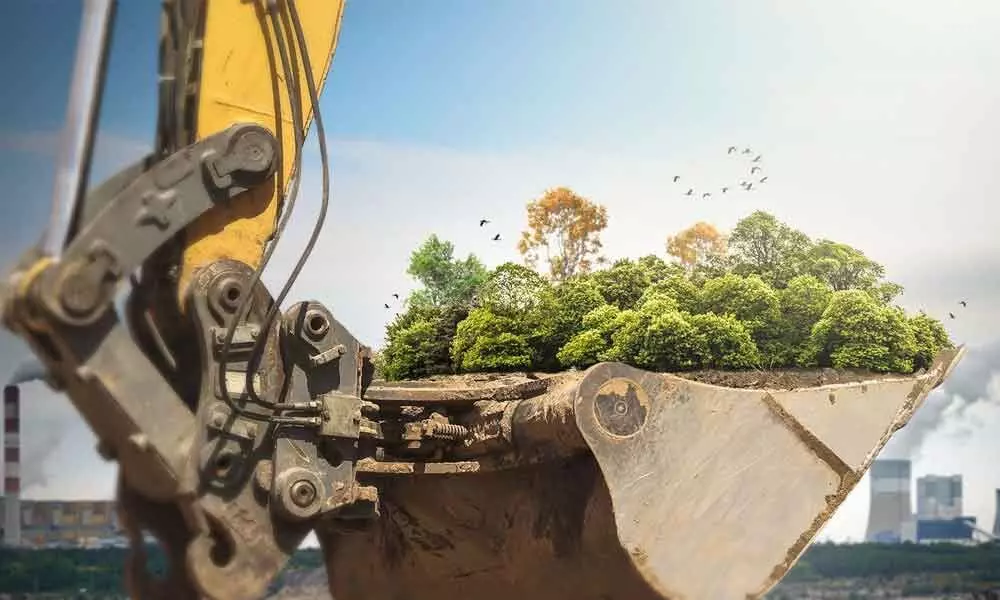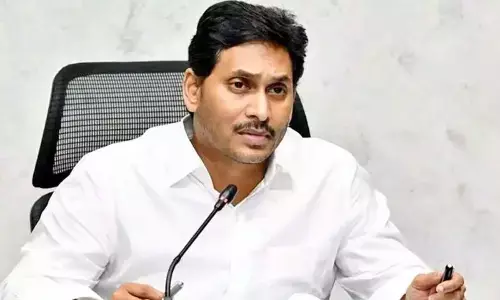EIA notification disregards Mother Earth

EIA notification disregards Mother Earth
The Union government has sought to dilute many provisions of the Environment Impact Assessment notification (EIA notification) in order to speed up the establishment of factories and mega cities and making of highways
The Union government has sought to dilute many provisions of the Environment Impact Assessment notification (EIA notification) in order to speed up the establishment of factories and mega cities and making of highways.
The requirement of public hearing is to be removed for certain projects, the Ministry is to be empowered to grant post-facto Environment Clearance (EC) to projects that are presently operating without EC, large numbers of projects such as irrigation and dredging of rivers are to be exempted from obtaining an EC, etc.
The intention of the government appears to be to help quickly establish mega cities and industries; and enable the making of highways promptly. A prompt EC is indeed necessary for securing an increase in our GDP.
However, the damage to the environment also pushes back our GDP. A large numbers of our High Net-worth Individuals (HNIs) have migrated from India and taken their money with them. One of their grouse has been that the air and water in India is polluted.
Thus, establishment of polluting industries may increase GDP directly but can lead to an even greater reduction in GDP by fleeing of our money. We are also not able to attract tourists despite having the Taj Mahal, Himalaya, Ganga and beaches of Goa because of poor environment.
One of the reasons for this poor state of our environment is that a number of projects ostensibly for the increase in GDP are actually leading to the opposite result. Take for, example, the National Waterway No 1 (NW1) being made on the Ganga.
The cost of transporting one ton material over a distance of one kilometer on NW1 said to be Rs 1.06 per ton against Rs 1.36 by rail. It is said that the NW1 would lead to a saving of 30 paise per ton kilometer.
But we forget that the distance from Haldia to Varanasi by rail is about 800 kilometers against about 1,300 kilometers by NW1 because the river meanders like a snake while the rail runs in a straight line.
Thus, the cost of transporting one ton material from Haldia to Varanasi is about Rs 1,370 by waterway and Rs 1,080 by rail despite the NW1 having a lower per ton kilometer cost. This project clearly harms the GDP. More so, if we add the loss of dolphins, Hilsa and other fish, deterioration in water quality, etc.
Yet, the officials of the Inland Waterways Authority of India are pushing the project for obvious reasons that are best left unsaid. At their behest, moreover, the government has sought to allow dredging of the rivers saying that the environmental regulation was a hurdle in the growth of GDP.
The truth is that GDP will increase if such ill-planned projects are stalled. The environmental regulations will do a yeoman's service to the GDP by stalling such projects. They should be strengthened to help grow the GDP.
One specific area that requires attention is that the costs and benefits of the projects must be assessed dispassionately. At present the environmental regulations do not require any assessment whether a project is beneficial for the GDP or not.
Also, the Environment Impact Assessment (EIA), which is a precondition for the grant of an EC, should be made by an independent agency to be appointed by the government. At present the project proponent appoints the EIA Agency. Needless to say, he who pays the piper calls the tune. Thus, EIAs suppress more environmental impacts than they disclose.
For example, the environmental assessment of NWI got done by no less than the World Bank ignored the fact that the distance is more through the waterways. The third area requiring attention is that an EC remains should be made valid only for a specified number of years. Every project has a "commercial life" built into its financial assessment.
The project is supposed to pay back the investment in this period. The hydropower projects in the United States, for example, are given clearance for 30 years and the project proponents are required to obtain fresh EC at that time. The underlying idea is that the project proponent has already recovered its investment and it suffers no loss if the project is scrapped.
There is yet a need for reform of the EC process. It needs to be fast-tracked. The projects are hit by the long time taken in the grant of the Environment-, Forest-, Wildlife-, Coastal- and Pollution Clearances.
The government could make a unified clearance process which looks at all these laws in one go while, at the same time, strengthening these laws.
The other area calling for reform is the interference of the courts. The copper plant of Vedanta has, for example, been closed down by the courts due to the violation of environmental regulations.
This has forced the country to import copper leading to a huge loss. There is a need to take a balanced view on this matter. I reckon that if the courts have stopped the operation of one beneficial project such as Vedanta; they allowed hundreds if not thousands of harmful projects to go on despite disastrous environmental impacts.
I can say from my own experience that the Srinagar Hydropower Project is wholly harmful for the GDP. It is producing electricity at Rs 9 per unit while the same is available on the India Energy Exchange at Rs 4 per unit.
The GDP of the country falls by Rs 5 with every unit of electricity made by the project. Yet the Supreme Court allowed this project to continue only on the consideration that a lot of money had been invested. At the same time, I would like to say that the only institution that stands for the protection of the environment today is the courts.
That said, there is need for speedy disposal of cases in the courts. The Prime Minister should meet with the Chief Justice of India to fast track disposal of case involving economic activities.
Secondly, the government should increase the strength of judges in National Green Tribunal, High Courts the Supreme Court by 5 times so that projects that are truly beneficial for the GDP are decided speedily.
Most courts today have a number of vacancies because of the lackadaisical attitude of the government and the Supreme Court. Thirdly, the number of working days of our courts should be increased. According to one study, the Supreme Court works for 190 days in a year, the High Courts an average of 232 days and lower courts 244 days. They all should be made to work 280 days.
Environment protection and GDP go hand-in-hand. The problem lies in the slow working of the government officials and the judges. We must strengthen the environmental laws along with speedy implementation to secure and increase in GDP.
(The writer is formerly Professor of Economics at IIM, Bengaluru)

















